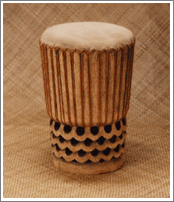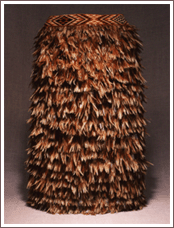Part I: Our Objects
In this lesson students will learn about the importance of certain objects for the communities included in Pacific Voices – Keeping Our Cultures Alive. They will also think about what objects they would choose to represent themselves as members of a specific culture or community. (Recommended chapters: 1, 2, 3, 4)
Activity: Objects of culture
1. After students have read selected chapters from the text, discuss the following questions with the class:
-
• How is the object used, and on what occasions?
• How is the object made? What materials are used?
• How is the object adorned or decorated?
• What meaning does the object have within the culture of origin?
• What meaning does the object have for the local community?
• How does this meaning persist, or change, through time and locations?
• How does the author describe his or her personal connection to the object?
• How does the author discuss the object as representative of his or her culture?
2. Write the following terms on the board and discuss:
 |
3. Also on the board, have the students make a list of the various cultures represented within the class. Next, have the students make an alternate list of other corporate, or group, ways in which they identify themselves (ethnic heritage, country of origin, etc. — for example, they may describe themselves as students, teenagers, musicians, athletes, members of a religious community… ). Ask the students if they see hard and fast boundaries. Are there areas of overlap? Are there areas where boundaries break down? What kinds of issues or problems do they see arising with the terms above?
4. Let the students consider their own cultural identity as a class and as individuals, then have them complete the following:
Write a description of themselves as members of a culture or particular community. Students should...
 |
|
5. Provide time for students to share their thoughts and writings with the class.
